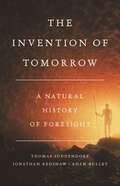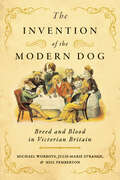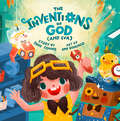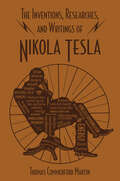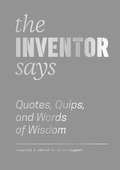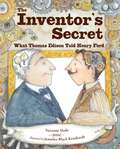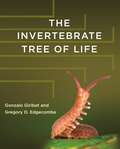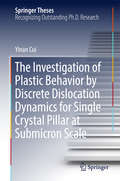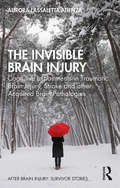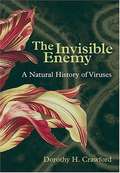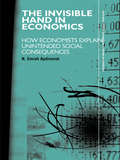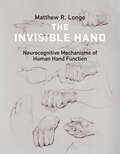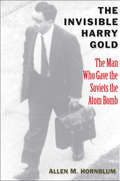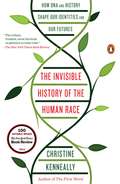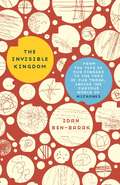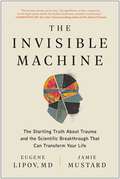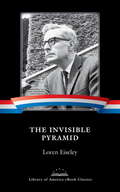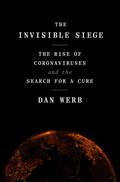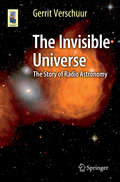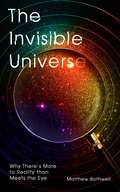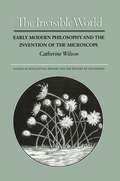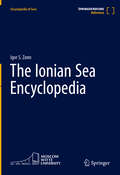- Table View
- List View
The Invention of Time and Space
by Patrice F. DassonvilleThis investigation of time and space is motivated by gaps in our current understanding: by the lack of definitions, by our failure to appreciate the nature of these entities, by our inability to pin down their properties. The author's approach is based on two key ideas: The first idea is to seek the geo-historical origins of time and space concepts. A thorough investigation of a diversified archaeological corpus, allows him to draft coherent definitions; it furthermore gives clues as to whether time and space were discovered or invented. The second idea is to define the units before trying to define space and time. The results presented here are unexpected: Time and space were not discovered in nature, but they were invented; time is not a phenomenon and space has no materiality; they are only concepts. This runs contrary to the opinion of most scientific and the philosophical authorities, although one would seek in vain for a theoretical validation of the conventional position. This book will provide much food for thought for philosophers and scientists, as well as interested general readers.
The Invention of Tomorrow: A Natural History of Foresight
by Thomas Suddendorf Jonathan Redshaw Adam BulleyA spellbinding exploration of the human capacity to imagine the future Our ability to think about the future is one of the most powerful tools at our disposal. In The Invention of Tomorrow, cognitive scientists Thomas Suddendorf, Jonathan Redshaw, and Adam Bulley argue that its emergence transformed humans from unremarkable primates to creatures that hold the destiny of the planet in their hands. Drawing on their own cutting-edge research, the authors break down the science of foresight, showing us where it comes from, how it works, and how it made our world. Journeying through biology, psychology, history, and culture, they show that thinking ahead is at the heart of human nature—even if we often get it terribly wrong. Incisive and expansive, The Invention of Tomorrow offers a fresh perspective on the human tale that shows how our species clawed its way to control the future.
The Invention of the Modern Dog: Breed and Blood in Victorian Britain (Animals, History, Culture)
by Julie-Marie Strange Michael Worboys Neil PembertonThe story of the thoroughly Victorian origins of dog breeds.For centuries, different types of dogs were bred around the world for work, sport, or companionship. But it was not until Victorian times that breeders started to produce discrete, differentiated, standardized breeds. In The Invention of the Modern Dog, Michael Worboys, Julie-Marie Strange, and Neil Pemberton explore when, where, why, and how Victorians invented the modern way of ordering and breeding dogs. Though talk of "breed" was common before this period in the context of livestock, the modern idea of a dog breed defined in terms of shape, size, coat, and color arose during the Victorian period in response to a burgeoning competitive dog show culture. The authors explain how breeders, exhibitors, and showmen borrowed ideas of inheritance and pure blood, as well as breeding practices of livestock, horse, poultry and other fancy breeders, and applied them to a species that was long thought about solely in terms of work and companionship.The new dog breeds embodied and reflected key aspects of Victorian culture, and they quickly spread across the world, as some of Britain’s top dogs were taken on stud tours or exported in a growing international trade. Connecting the emergence and development of certain dog breeds to both scientific understandings of race and blood as well as Britain’s posture in a global empire, The Invention of the Modern Dog demonstrates that studying dog breeding cultures allows historians to better understand the complex social relationships of late-nineteenth-century Britain.
The Inventions of God (Made in His Image)
by Dave ConnisThis delightfully illustrated picture book tells the story of inventor extraordinaire Eva—and the God who created her to be a lot like Him.Little Eva is a budding engineer who loves to invent machines, toys, and robots that bring her joy. But where does her curiosity, creativity, and pizzazz come from? Meet God. He loves to invent, too, and delights in His creations, especially Eva. God and Eva are A LOT alike because God made Eva to be just like Him.Eva loves her inventions, but maybe not their earlier versions. God loves Eva, every version of her, and He wants her to know just how much. Parents and children alike will relish the playful illustrations and the gentle reminder that the image of God is alive in each of us.
The Inventions, Researches, and Writings of Nikola Tesla: With Special Reference To His Work In Polyphase Currents And High Potential Lighting (classic Reprint) (Wordsworth Classics)
by Thomas Commerford MartinThe early works of famed inventor Nikola Tesla, and a source of inspiration for generations of innovators. At the time it was first published in 1893, The Inventions, Researches, and Writings of Nikola Tesla was considered the bible of electrical engineering and inspired generations of inventors. This volume, edited by Tesla’s contemporary, Thomas Commerford Martin, includes extensive discussion of Tesla’s early work and inventions and contains more than 300 illustrations that demonstrate the practical application of his ideas. Tesla, who was born in what is now Croatia, is best known for his research into the use of high-frequency alternating currents and wireless transmission. Many of his ideas have found practical application in the modern world, and he continues to be a source of inspiration and fascination to this day.
The Inventor Says: Quotes, Quips and Words of Wisdom
by Kevin LippertThe sixth in our popular Words of Wisdom series, The Inventor Says invites readers to a gathering of history's most brilliant creative minds, where inventors past and present jostle, compete, contradict, and compliment each other. Groundbreakers such as Leonardo da Vinci, Benjamin Franklin, Henry Ford, Ada Lovelace, the Wright Brothers, and Sejong the Great converse with the twentieth century's most ingenious tinkerers and thinkers, from Buckminster Fuller, Ruth Handler (creator of the Barbie doll), Nikola Tesla (who cuts Thomas Edison down to size for his lack of scientific discipline), and Apple's Steve Wozniak to contemporary figures like Lisa Seacat DeLuca, IBM's most prolific female inventor. These intrepid innovators discuss their childhood, inspirations, working habits, failure as a productive stage in the creative process, and much more, in a collection that will inspire readers to hatch a few brilliant ideas of their own. As Edwin Land advised: "Don't undertake a project unless it is manifestly important and nearly impossible."
The Inventor's Secret: What Thomas Edison Told Henry Ford
by Suzanne SladeBoth Thomas Edison and Henry Ford started off as insatiably curious tinkerers. That curiosity led them to become inventors—with very different results. As Edison invented hit after commercial hit, gaining fame and fortune, Henry struggled to make a single invention (an affordable car) work. Witnessing Thomas's glorious career from afar, a frustrated Henry wondered about the secret to his success. This little-known story is a fresh, kid-friendly way to show how Thomas Edison and Henry Ford grew up to be the most famous inventors in the world—and best friends, too.
The Invertebrate Tree of Life
by Gonzalo Giribet Gregory D. EdgecombeThe most up-to-date book on invertebrates, providing a new framework for understanding their place in the tree of lifeIn The Invertebrate Tree of Life, Gonzalo Giribet and Gregory Edgecombe, leading authorities on invertebrate biology and paleontology, utilize phylogenetics to trace the evolution of animals from their origins in the Proterozoic to today. Phylogenetic relationships between and within the major animal groups are based on the latest molecular analyses, which are increasingly genomic in scale and draw on the soundest methods of tree reconstruction.Giribet and Edgecombe evaluate the evolution of animal organ systems, exploring how current debates about phylogenetic relationships affect the ways in which aspects of invertebrate nervous systems, reproductive biology, and other key features are inferred to have developed. The authors review the systematics, natural history, anatomy, development, and fossil records of all major animal groups, employing seminal historical works and cutting-edge research in evolutionary developmental biology, genomics, and advanced imaging techniques. Overall, they provide a synthetic treatment of all animal phyla and discuss their relationships via an integrative approach to invertebrate systematics, anatomy, paleontology, and genomics.With numerous detailed illustrations and phylogenetic trees, The Invertebrate Tree of Life is a must-have reference for biologists and anyone interested in invertebrates, and will be an ideal text for courses in invertebrate biology.A must-have and up-to-date book on invertebrate biologyIdeal as both a textbook and referenceSuitable for courses in invertebrate biologyRichly illustrated with black-and-white and color images and abundant tree diagramsWritten by authorities on invertebrate evolution and phylogenyFactors in the latest understanding of animal genomics and original fossil material
The Investigation of Plastic Behavior by Discrete Dislocation Dynamics for Single Crystal Pillar at Submicron Scale
by Yinan CuiThis thesis transports you to a wonderful and fascinating small-scale world and tells you the origin of several new phenomena. The investigative tool is the improved discrete dislocation-based multi-scale approaches, bridging the continuum modeling and atomistic simulation. Mechanism-based theoretical models are put forward to conveniently predict the mechanical responses and defect evolution. The findings presented in this thesis yield valuable new guidelines for microdevice design, reliability analysis and defect tuning.
The Invisible Brain Injury: Cognitive Impairments in Traumatic Brain Injury, Stroke and other Acquired Brain Pathologies (After Brain Injury: Survivor Stories)
by Aurora Lassaletta AtienzaThe Invisible Brain Injury recounts, in her own words, the experience of Aurora Lassaletta, a clinical psychologist who suffered a traumatic brain injury (TBI) after a traffic accident. Presenting her unique dual perspective as both a patient and a clinician, Aurora highlights the less visible cognitive, emotional and behavioural symptoms common to acquired brain injury (ABI). This moving account showcases Aurora’s growing awareness of her impairments, their manifestation in daily life, how they are perceived, or not, by others and the tools that helped her survive. Each chapter combines Aurora’s perspective with the scientific view of a professional neuropsychologist or physiatrist who provide commentaries on her various symptoms. This book is valuable reading for professionals involved in neurorehabilitation and clinical neuropsychology and for clinical psychology students. It is a must read for ABI survivors, those around them and clinicians, who are all an essential part of the rehabilitation, adjustment and acceptance process involved with ABI.
The Invisible Enemy: A Natural History of Viruses
by Dorothy CrawfordIn 1969 the US Surgeon General confidently declared, "We can now close the book on infectious diseases." The advent of AIDS has proven him spectacularly wrong, and in recent years the world has witnessed infectious outbreaks of other highly lethal viruses such as Hanta, Ebola, and Lassa fever. Flu strains are getting stronger and stronger each year. But what, exactly, is a virus? How does it work? And what is the best way to fight it? In Invisible Enemy, Dorothy Crawford offers clear answers to these and many other questions. She shows precisely how viruses, with their amazing ability to mutate, have caused devastating diseases in the past, and continue to pose one of the greatest challenges to science. A virus is disarmingly small and simple--a minute piece of genetic material wrapped in a protein coat. And yet it can cause major chaos. Smallpox killed over 300 million people in the twentieth century before it was eradicated in 1980; at that time, measles still killed two and half million children a year; and the HIV virus is now the leading cause of death in Africa. Crawford lucidly explains all aspects of these deadly parasites and discusses controversial subjects such as CFS and Gulf War Syndrome. She goes on to consider how we've coped with viruses in the past, where new viruses come from, and whether a new virus could wipe out the human race. For anyone seeking a deeper understanding of these remarkably efficient killers, Invisible Enemy provides a compelling account of their history, their effects on us, and their possible future.
The Invisible Hand in Economics: How Economists Explain Unintended Social Consequences (Routledge Inem Advances In Economic Methodology Ser.)
by N. Emrah AydinonatThis is a book about one of the most controversial concepts in economics: the invisible hand. The author explores the unintended social consequences implied by the invisible hand and discusses the mechanisms that bring about these consequences.The book questions, examines and explicates the strengths and weaknesses of invisible-hand explanations co
The Invisible Hand: Neurocognitive Mechanisms of Human Hand Function
by Matthew R. LongoHow the &“invisible hand&” of the nervous system makes the human hand such an evolutionary success.The hand has a central role in both human evolution and cultural development—in our descent and in our ascent. It is, Immanuel Kant said, &“the visible part of the brain.&” It is the invisible that concerns Matthew Longo in The Invisible Hand, a wide-ranging, deftly written account of the neural and cognitive mechanisms that have made a seemingly ordinary physical appendage an extraordinary tool in the evolution of humanity.The hand has been the focus of an enormous amount of research from a dizzying range of disciplines, from anatomy, psychology, and neuroscience to evolutionary biology and archaeology. With the concept of the invisible hand, Longo integrates and contextualizes the findings from these disparate fields to show how the neurocognitive mechanisms that comprise the invisible hand are central to understanding a wide array of phenomena, including basic sensory and motor function, space perception, gesture, and even the self. More generally, he contends that the extraordinary abilities of the hand arise precisely from the complementary nature and tight integration of the visible and invisible hands—a proposition that leads deep into topics as diverse as haptics, tool use, handedness, phantom limbs, and evolution. His work elucidates and significantly expands a key chapter of the story of human evolution and culture as manifested in the human hand.
The Invisible Harry Gold
by Allen M. HornblumIn the history of Soviet espionage in America, few people figure more crucially than Harry Gold. A Russian Jewish immigrant who spied for the Soviets from 1935 until 1950, Gold was an accomplished industrial and military espionage agent. He was assigned to be physicist Klaus Fuchs's "handler" and ultimately conveyed sheaves of stolen information about the Manhattan Project from Los Alamos to Russian agents. He is literally the man who gave the USSR the plans for the atom bomb. The subject of the most intensive public manhunt in the history of the FBI, Gold was arrested in May 1950. His confession revealed scores of contacts, and his testimony in the trial of the Rosenbergs proved pivotal. Yet among his co-workers, fellow prisoners at Lewisburg Penitentiary, and even those in the FBI, Gold earned respect, admiration, and affection. InThe Invisible Harry Gold, journalist and historian Allen Hornblum paints a surprising portrait of this notorious yet unknown figure. Through interviews with many individuals who knew Gold and years of research into primary documents, Hornblum has produced a gripping account of how a fundamentally decent and well-intentioned man helped commit the greatest scientific theft of the twentieth century.
The Invisible History of the Human Race
by Christine Kenneally* A New York Times Notable Book *"The richest, freshest, most fun book on genetics in some time." --The New York Times Book Review We are doomed to repeat history if we fail to learn from it, but how are we affected by the forces that are invisible to us? In The Invisible History of the Human Race Christine Kenneally draws on cutting-edge research to reveal how both historical artifacts and DNA tell us where we come from and where we may be going. While some books explore our genetic inheritance and popular television shows celebrate ancestry, this is the first book to explore how everything from DNA to emotions to names and the stories that form our lives are all part of our human legacy. Kenneally shows how trust is inherited in Africa, silence is passed down in Tasmania, and how the history of nations is written in our DNA. From fateful, ancient encounters to modern mass migrations and medical diagnoses, Kenneally explains how the forces that shaped the history of the world ultimately shape each human who inhabits it. The Invisible History of the Human Race is a deeply researched, carefully crafted and provocative perspective on how our stories, psychology, and genetics affect our past and our future.From the Hardcover edition.
The Invisible History of the Human Race: How DNA and History Shape Our Identities and Our Futures
by Christine KenneallyHow biology, psychology, and history shape us as individuals<P> We are doomed to repeat history if we fail to learn from it, but how are we affected by the forces that are invisible to us? In The Invisible History of the Human Race Christine Kenneally draws on cutting-edge research to reveal how both historical artifacts and DNA tell us where we come from and where we may be going. While some books explore our genetic inheritance and popular television shows celebrate ancestry, this is the first book to explore how everything from DNA to emotions to names and the stories that form our lives are all part of our human legacy. Kenneally shows how trust is inherited in Africa, silence is passed down in Tasmania, and how the history of nations is written in our DNA. From fateful, ancient encounters to modern mass migrations and medical diagnoses, Kenneally explains how the forces that shaped the history of the world ultimately shape each human who inhabits it. <P> The Invisible History of the Human Race is a deeply researched, carefully crafted and provocative perspective on how our stories, psychology, and genetics affect our past and our future.
The Invisible Kingdom: From the Tips of Our Fingers to the Tops of Our Trash, Inside the Curious World of Microbes
by Idan Ben-BarakWith the wit of Bill Bryson and the spirit of Natalie Angier, Idan Ben- Barak takes us on a fantastic voyage into the infinitesimal world of microbiology. In The Invisible Kingdom, he introduces us to the amazing lives and workings of genes, proteins, bacteria, and viruses, and the ways in which they interact to shape life on Earth. Exploring everything from radioactive waste and insect sex-change operations to the inner workings of antibiotics, Ben-Barak reveals how important these tiny critters are to all of us. He brings this largely unseen world to life with refreshing analogies and metaphors: cells "pop like bubbles” and bacteria "dream of rain. ” On the journey, we learn about the teamwork required to rot human teeth, the origins of diseases, what really goes on inside cow stomachs, and the ways in which microbes benefit human life. An infectious and informative scientific exploration, The Invisible Kingdom will change the way we see the world around us.
The Invisible Machine: The Startling Truth About Trauma and the Scientific Breakthrough That Can Transform Your Life
by Jamie Mustard Eugene LipovPenCraft Book Awards 2023 Non-Fiction Runner Up The world has long misunderstood trauma. Now, leading experts in the field have a radical new understanding of post-traumatic stress . . . and a surprising new treatment to reverse it could have profound implications for medicine, mental health, and society. Despite its prevalence, post-traumatic stress, PTSD, is often seen as an unbeatable lifelong mental disorder. However, top trauma doctors and neuroscientists now understand that the result of trauma is not a disorder, but rather a physical injury—and while invisible to the naked eye, the posttraumatic stress injury (PTSI) can now be seen on a scan. Most importantly, the effects of PTSI are reversible. Meet Dr. Eugene Lipov. His research and partnerships have led to an amazing discovery that all trauma has at its root a single piece of human hardware: the sympathetic nervous system, controlling the fight-or-flight response. Anyone who has endured trauma, including long-term microdoses of emotional stress, can have this injury. Dr. Lipov has pioneered a safe, 15-minute procedure that reverses the injury, relieving mild to extreme symptoms of PTSI—irritability, hypervigilance, anxiety, insomnia, and more—for survivors to combat soldiers to the everyday person. Weaving hard science with moving human stories, The Invisible Machine reveals how this treatment was developed. It also tells the incredible story of the unlikely team, including the doctor, an artist, Special Forces leadership, and a sheriff, who are working together to change our understanding of post-traumatic stress and why it matters to society. Coauthored by artist and innovator Jamie Mustard and in collaboration with writer Holly Lorincz, The Invisible Machine weaves hard science with moving stories of warriors, prisoners, and ordinary people to provide a stark new understanding of the human condition. The implications for a better, pain-free world are astounding—and that world could be nearer than we think.
The Invisible Pyramid
by Loren C. EiseleyThis collection of essays, first published shortly after Americans landed on the moon, explores inner and outer space, the vastness of the cosmos, and the limits of what can be known.
The Invisible Pyramid: A Library of America eBook Classic
by Loren Eiseley William CrononTo read Loren Eiseley is to renew a sense of wonder at the miracles and paradoxes of evolution and the ever-changing diversity of life. In this brilliant collection he considers the cosmological significance and ultimate meanings of our evolutionary history, offering a series of profound, lyrical meditations on the origins and possible futures of humankind against the backdrop of the Apollo landings. As Western civilization attains new heights of scientific awareness and technological skill, he asks, is it also blind to its own limits and destructive capacities? Always a fond observer of the natural world, Eiseley makes a newly urgent, environmentalist plea in The Invisible Pyramid: we must protect the fragile "world island" against our unchecked power to pollute and consume it.
The Invisible Siege: The Rise of Coronaviruses and the Search for a Cure
by Dan Werb&“A journey into the origins of COVID-19 and the discovery of vaccines and potential cures . . . I learned so much that I didn&’t know before—above all, I met the subtle warriors of the laboratory who are working to save all of us from the horror of new pandemics.&”—Richard Preston, bestselling author of The Hot Zone and The Demon in the Freezer One of Publishers Weekly&’s top ten science books of the season The urgency of the devastating COVID-19 pandemic has fixed humanity&’s gaze on the present crisis. But the story of this pandemic extends far further back than many realize. In this engrossing narrative, epidemiologist Dan Werb traces the rising threat of the coronavirus family and the attempts by a small group of scientists who worked for decades to stop a looming viral pandemic.When virologist Ralph Baric began researching coronaviruses in the 1980s, the field was a scientific backwater—the few variants that infected humans caused little more than the common cold. But when a novel coronavirus sparked the 2003 SARS epidemic, and then the MERS epidemic a decade later, Baric and his allies realized that time was running out before a pandemic strain would make the inevitable jump from animals to human hosts.In The Invisible Siege, Werb unpacks the dynamic history and microscopic complexity of an organism that has wreaked cycles of havoc upon the world for millennia. Elegantly tracing decades of scientific investigation, Werb&’s book reveals how Baric&’s team of scientists hatched an audacious plan not merely to battle COVID-19 but to end pandemics forever. Yet as they raced to find a cure, they ran into a complicated nexus of science, ethics, industry, and politics that threatened to derail their efforts just as COVID-19 loomed ever larger.The Invisible Siege is an urgent and moving testament to the unprecedented scientific movement to stop COVID-19—and a powerful look at the infuriating factors that threaten to derail discovery and leave the world vulnerable to the inevitable coronaviruses to come.
The Invisible Universe
by Gerrit VerschuurHidden from human view, accessible only to sensitive receivers attached to huge radio telescopes, the invisible universe beyond our senses continues to fascinate and intrigue our imaginations. Closer to home, in the Milky Way galaxy, radio astronomers listen patiently to the ticking of pulsars that tell of star death and states of matter of awesome densities. All of this happens out there in the universe hidden from our eyes, even when aided by the Hubble Space Telescope. This is the story of radio astronomy, of how radio waves are generated by stars, supernova, quasars, colliding galaxies and by the very beginnings of the universe itself. The author discusses what radio astronomers are doing in the New Mexico desert, in a remote valley in Puerto Rico, and in the green Pocahontas Valley in West Virginia, as well as dozens of other remote sites around the world. With each of these observatories, the scientists collect and analyze their data, "listening" to the radio signals from space in order to learn what, or perhaps who, is out there as well. The author specifically highlights enormous changes that have occurred in the field over the past 50 years, including the political reality of radio astronomy and what that could mean for the future.
The Invisible Universe: Why There's More to Reality than Meets the Eye
by Matthew BothwellFrom the discovery of entirely new kinds of galaxies to a window into cosmic &‘prehistory&’, Bothwell shows us the Universe as we&’ve never seen it before – literally. Since the dawn of our species, people all over the world have gazed in awe at the night sky. But for all the beauty and wonder of the stars, when we look with just our eyes we are seeing and appreciating only a tiny fraction of the Universe. What does the cosmos have in store for us beyond the phenomena we can see, from black holes to supernovas? How different does the invisible Universe look from the home we thought we knew? Dr Matt Bothwell takes us on a journey through the full spectrum of light and beyond, revealing what we have learned about the mysteries of the Universe. This book is a guide to the ninety-nine per cent of cosmic reality we can&’t see – the Universe that is hidden, right in front of our eyes. It is also the endpoint of a scientific detective story thousands of years in the telling. It is a tour through our Invisible Universe.
The Invisible World: Early Modern Philosophy and the Invention of the Microscope (Studies in Intellectual History and the History of Philosophy #2)
by Catherine WilsonIn the seventeenth century the microscope opened up a new world of observation, and, according to Catherine Wilson, profoundly revised the thinking of scientists and philosophers alike. The interior of nature, once closed off to both sympathetic intuition and direct perception, was now accessible with the help of optical instruments. The microscope led to a conception of science as an objective, procedure-driven mode of inquiry and renewed interest in atomism and mechanism. Focusing on the earliest forays into microscopical research, from 1620 to 1720, this book provides us with both a compelling technological history and a lively assessment of the new knowledge that helped launch philosophy into the modern era. Wilson argues that the discovery of the microworld--and the apparent role of living animalcula in generation, contagion, and disease--presented metaphysicians with the task of reconciling the ubiquity of life with human-centered theological systems. It was also a source of problems for philosophers concerned with essences, qualities, and the limits of human knowledge, whose positions are echoed in current debates about realism and instrument-mediated knowledge. Covering the contributions of pioneering microscopists (Leeuwenhoek, Swammerdam, Malpighi, Grew, and Hooke) and the work of philosophers interested in the microworld (Bacon, Descartes, Leibniz, Malebranche, Locke, and Berkeley), she challenges historians who view the abstract sciences as the sole catalyst of the Scientific Revolution as she stresses the importance of observational and experimental science to the modern intellect.
The Ionian Sea Encyclopedia (Encyclopedia of Seas)
by Igor S. ZonnThe book is dedicated to the Ionian Sea, which is part of the Mediterranean. The encyclopedia contains about 600 articles on the hydrographic and geographic objects, hydrological features of the sea, biological resources, as well as administrative-territorial units of the Ionian countries. The most significant natural objects like islands, peninsulas, bays, rivers, mountains, their geographical peculiarities are briefly described as well as economy, culture and history, cities, ports, international agreements, research institutions, activities of outstanding scientists, researchers, travelers are presented in the publication. The chronology of the main historical events that have become significant landmarks in the history of discovery and exploration of the Ionian Sea from the 31 B.C. to the present day is given.

